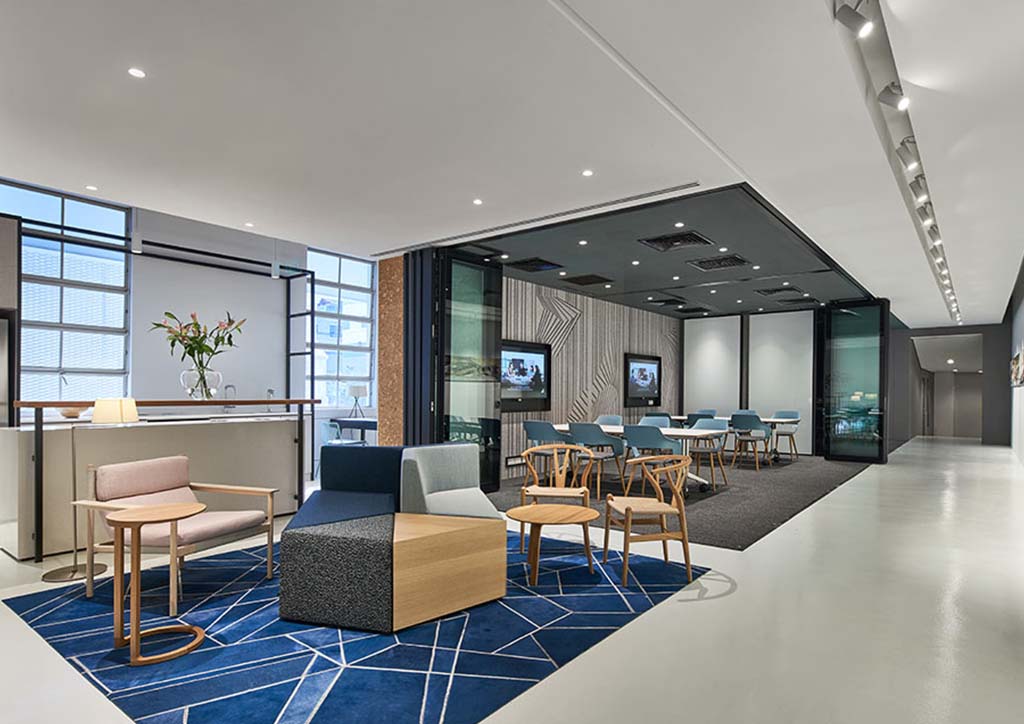
Women Run Design: Matilda Sung on why interior design emphasizes a woman’s strengths
The Designing Workplace Culture forum gave BluPrint an opportunity to meet two powerful women. After our interview with Paperspace Asia founder and director Narita Cheah, we spoke to Graphite Studio co-founder Matilda Sung. She shared with us how she slowly discovered her passion, leading her to explore and pursue interior design.
READ MORE: Women Run Design: Narita Cheah encourages women to make themselves present
The bright idea
Matilda Sung discovered what she wanted through a hobby that started to grow in her. Intrigued by design and furniture, she found herself sketching her own chair designs at the age of fourteen. “As I was discovering the world and discovering possible careers, I realized that I was interested in spaces. I was interested in houses, in forms, and how things come together.” Straight out of secondary school, she studied interior design at Temasek Polytechnic, a prominent design school in Singapore. She shares that fifty to sixty percent of her class was female, so she never really felt like the craft is a man’s world. “I think architecture is predominantly male, but for interior design, it’s a completely different story.”

Driven by her passion, Matilda Sung founded Graphite Studio in April 2016 with partners Hoa Huang and Nigel Liau. Currently, the studio operates with eight people, six of whom are female. Sung shares that at work, women “tend to be more able to say that they don’t know something”, citing situations where women ask for help and study how to get through the process. Sung adds that women are also more concerned about the well-being of people.”I observe how they pay attention even to the smallest of things, like making sure all members have already eaten.” The interior designer also mentioned how they smoothly handle projects driven by the meticulous ways of female designers.
YOU MIGHT LIKE: Women Run Design: Being female is not an excuse nor a limitation—Cathy Saldaña
Flipping the switch
When asked how the two men in the studio work within a small, female-dominated studio, Matilda Sung shares that their office environment is very fun and light. “I have a male business partner, and sometimes certain gender stereotypes come up in our fight, but it’s all for laughs,” she tells. “Sometimes we reverse, I can be very practical and my business partner could be quite random.” No matter how much she is an advocate of women in the workplace, the co-founder says that they never hire according to gender and that it’s always about connecting person to person.

Talking about gender equality, the conversation then went back to why Matilda Sung thinks that interior design is not a predominantly masculine industry. “Interior design, I believe, is fair enough to women. However, the larger industry where it is under can sometimes be unfair. A lot of the decision-makers that we talked to: clients, CEOs, CFOs, HR directors, project managers or project directors, most of them are men. I have experienced being talked over or just not being that valued at the table, just because maybe I look younger or female,” she narrates. “However, for interior design alone, there’s always this tendency of women taking the lead. Women pay more attention to details, like what color complements the entire background, or what size would best fit in this space. I think interior design is feminine because it’s a platform for creative women to express themselves freely.”
Leaving the light on
With Matilda Sung seeing interior design as an appropriate platform for women, we then asked her if there are certain aspects that she wishes to change in the field. She discussed that education is one of the few things that should improve on, not only in interior design but in general. “I think the education system should also allow people to not worry about grades so much, especially in a creative field. How do we hold people? How do we hold students to do their best work and to their highest potential, but not pressure them with a certain GPA percentage?” she states. “Being a mentor in school has taught me a lot about how younger people think and what they’re concerned with. I’ve tried to ask them to think of the question in a different way, or not worry so much about the next presentation. There is always a different perspective, there is more to life. It’s not the end of the world if the presentation wasn’t perfect.” Sung stressed this, saying that during these times, women get to explain more and give more emotional support. She believes that women can help in addressing this because they look into these aspects way more than men do.


To keep the industry running, Matilda Sung gathers that the entire architecture and design industry should learn how to respect and value interior design. “There’s something more about this bespoke and customized service and we should stop treating it as free, cheap, and plain consumable.” She adds that all of these can and should start in the internal industry and that interior designers should learn how to value themselves more. Sung states that interior design may often be seen as a lesser creative science, but this shouldn’t be the case. She then called to the majority of women in her industry, saying “women should raise their heads, roll up their sleeves and not be afraid to do it.” Her message to young designers, men included, is to “not just copy and paste. Let us value our work and design sensitively.” For her, she is definitely not in a man’s world, and interior design is not merely a part of architecture and design — it’s invaluable art.
READ MORE: Women Run Design: How Jumax Morgia walked away from and ran back to architecture
Images courtesy of Graphite Studio


